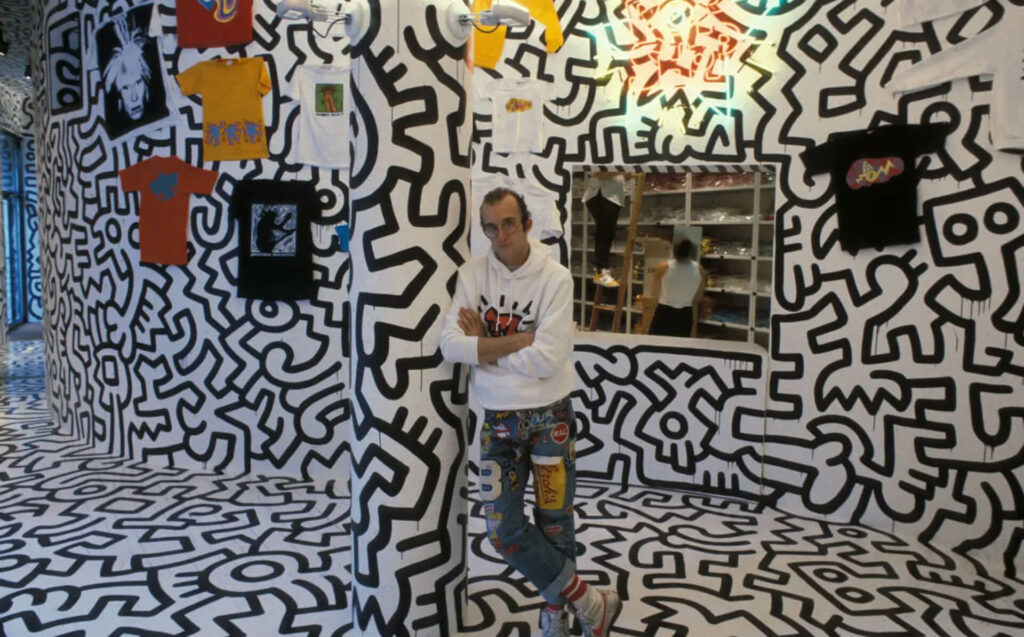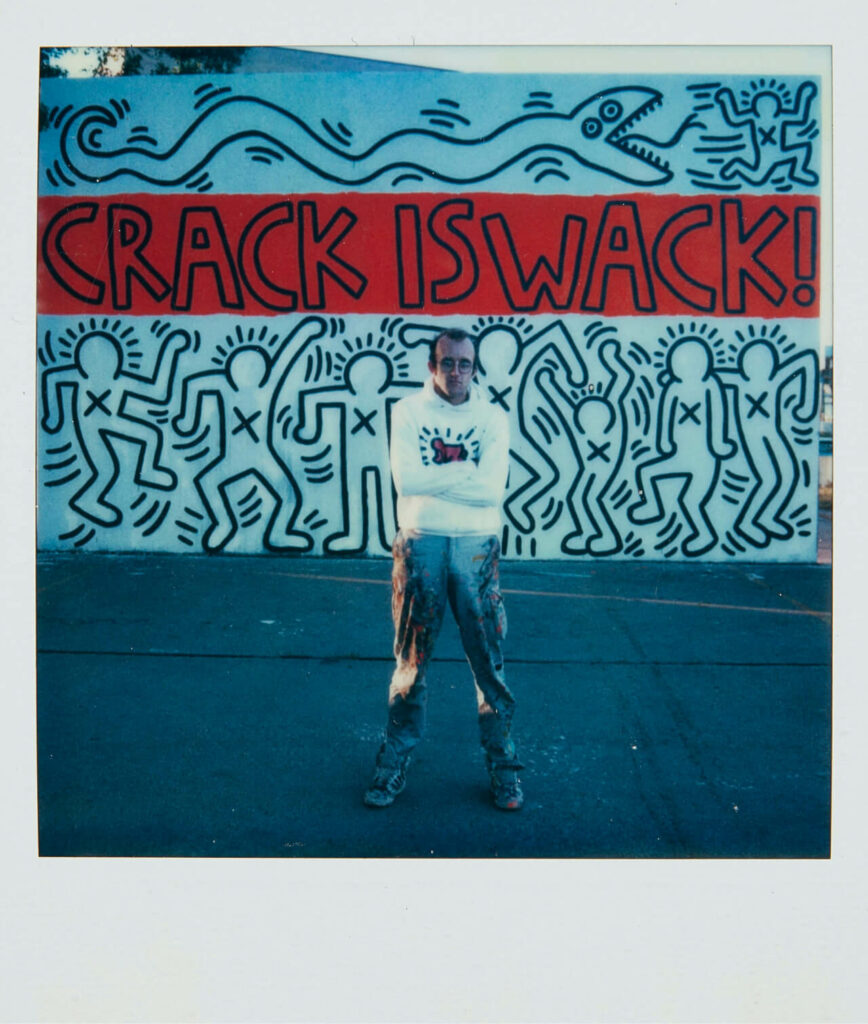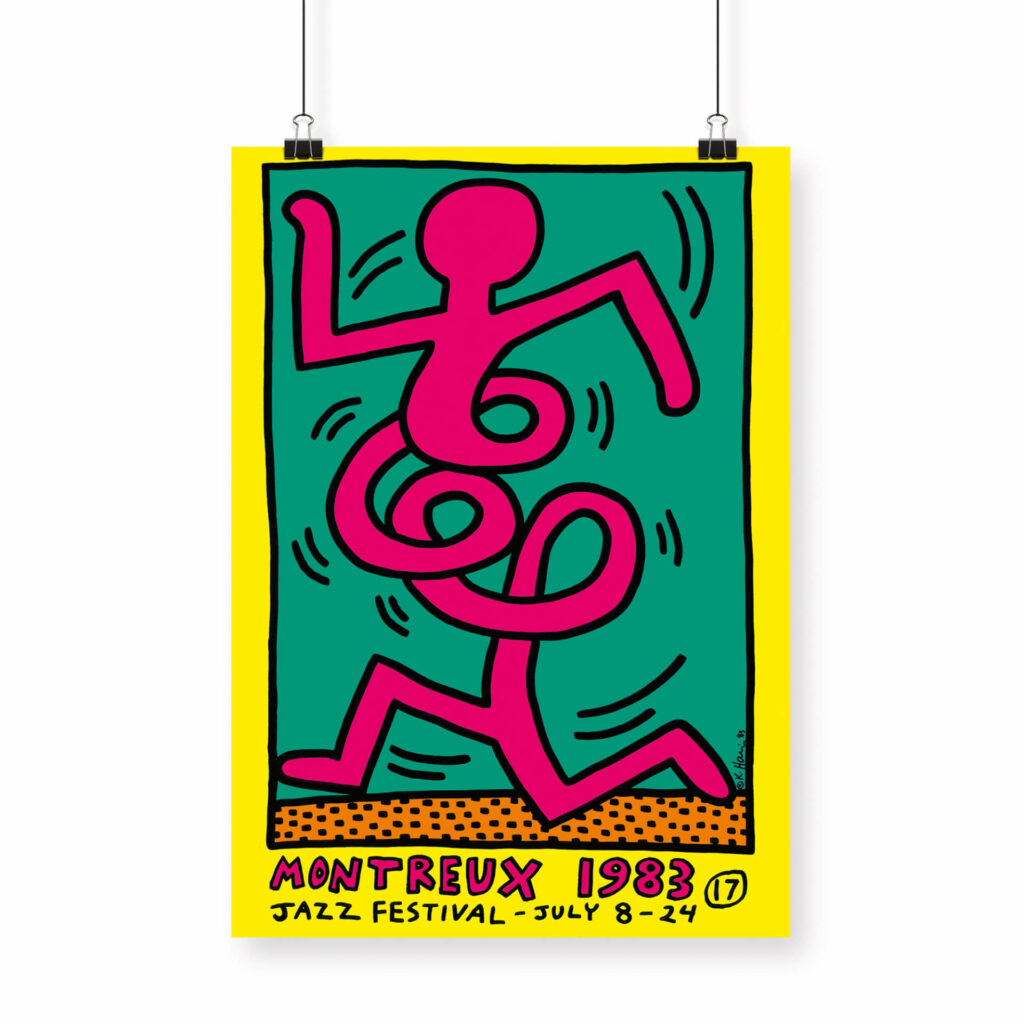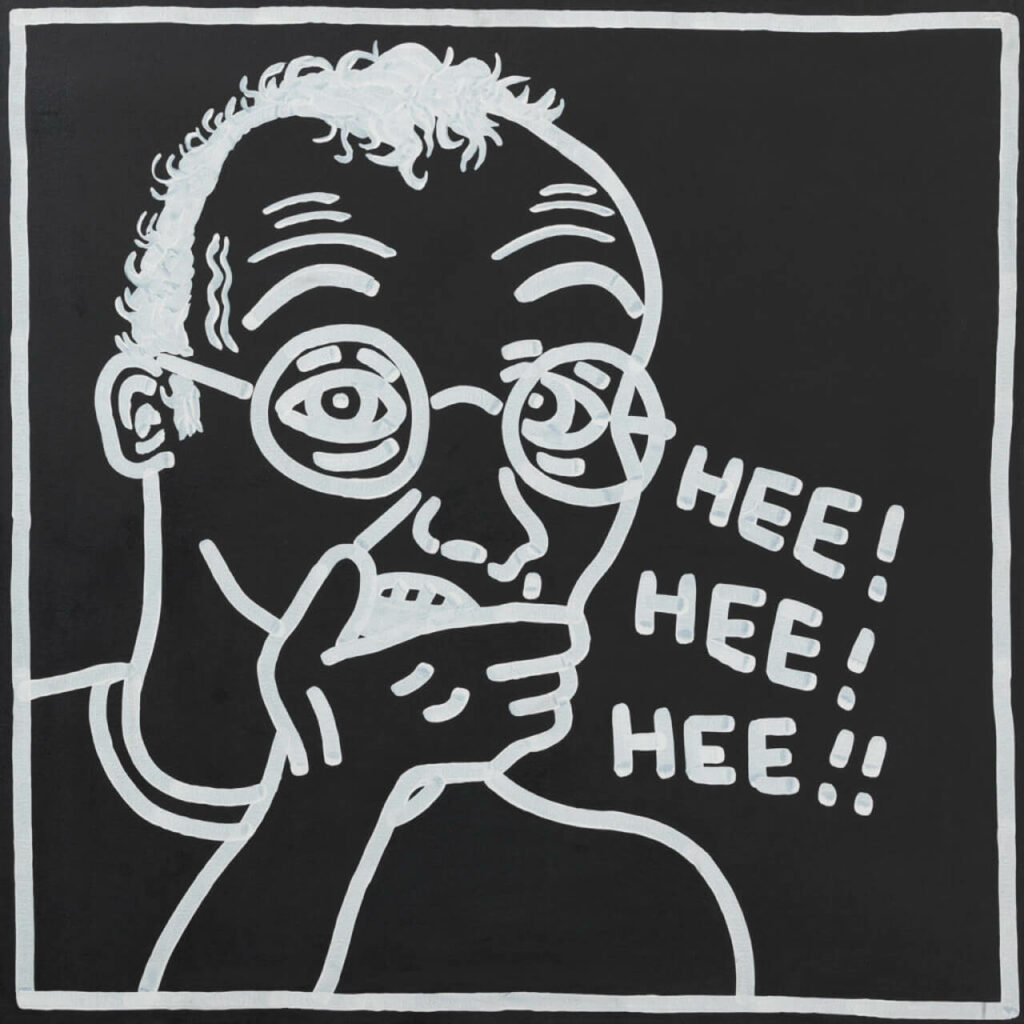Keith Haring was an influential American artist known for his unique pop and graffiti-inspired art that emerged from New York City’s 1980s street culture. Characterised by its childlike simplicity and bold line drawings, Haring’s work delved into profound themes such as life, love, war, and death.

He emphasized the purity and positive nature of childhood, often drawing parallels between children’s unfiltered perspectives and his own art. Haring lamented the societal influences that shape and sometimes limit our views as we grow older. His upbringing in the transformative 60s, marked by events like the moon landing, influenced his art, which often featured contemporary symbols like flying saucers and nuclear icons.
In 1978, Keith’s move to New York City for art school introduced him to street graffiti, particularly the artist SAMO aka Jean-Michel Basquiat. Rejecting traditional gallery norms, Keith began drawing with chalk on empty advertising spaces in the subway by 1980, which significantly boosted his fame over the next five years.
Keith Haring was an intuitive artist, often producing art rapidly, influenced by his emotions and surroundings. While he rose to fame swiftly, the art establishment grappled with understanding his unconventional style, and he faced criticism from those who felt his work lacked the gravity of “high art.” Despite this, Haring drew inspiration from a diverse range of sources, including renowned artists, cartoons, and ancient scripts.
With the growing popularity of his subway art and rampant imitations, he opened The Pop Shop, aiming to make genuine pieces of his work accessible to everyone. By the mid-80s, his art became a cultural sensation, appearing on merchandise and bridging the gap between the art world and popular culture.

Haring’s deep belief in art’s transformative power led him to collaborate on art projects with children worldwide, culminating in a massive banner project during the Statue of Liberty’s centennial celebration. Yet, his art was also a reflection of the pressing issues of his era. His mural “Crack is Wack” addressed the crack cocaine epidemic of the 80s, while his personal and broader community’s battles with HIV/AIDS spurred his activism, leading him to produce poignant art pieces promoting safe sex and HIV awareness.
Passing away in 1990 at just 31, Haring left an indelible mark with nearly 50 solo shows, 45 murals, and over 10,000 art pieces that solidify his enduring impact on art and culture.
Keith Haring passed away over 30 years ago, but his art still feels alive. We see it on Instagram, Uniqlo hoodies, pins, bank cards, and stickers. His radiant baby, barking dog, dancer, and three-eyed smiling face pop up everywhere. Haring’s art was public-minded and aimed to inform, start conversations, question authority, and represent the oppressed. Today, his paintings sell for millions of dollars.
There is a renewed interest in the artistic era Haring was part of – a collaborative time in New York where pop, rap, and art mixed. This period started in the mid-to-late 70s and ended with the deaths of Andy Warhol in 1987, Jean-Michel Basquiat in 1988, and Keith Haring in 1990.
Collecting Keith Haring Prints
His print market has increased by nearly 150% between 2017 and 2023, showing how popular his work remains today. If you’re looking to purchase Keith Haring artwork but don’t know where to start, consider your budget first. For those with less than £5,000 to spend, look into pieces like his poster designs for the Montreux Jazz Festival. If you have a larger budget, explore more iconic works such as the Pop Shop series or even signed prints featuring both Haring’s and Warhol’s signatures if available.

Keith Haring prints are an affordable option for anyone interested in collecting his work since they come at various price points. Some famous portfolios include Lucky Strike portfolio Icons portfolio and Andy Mouse portfolio .


The Pop Shop series is also highly sought after because these were created specifically for sale in Keith Haring’s original Pop Shop which opened in New York City back in1986 . The shop aimed to sell affordable art from not only him but also contemporary artists’ works including t-shirts alongside their fine arts pieces

In line with this philosophy of making art accessible, Haring once said “Art is nothing if you don’t reach every segment of people.” Today we can still see echoes of this mission through major brands selling items featuring Keith’s imagery
Collecting Keith Haring Artworks
Keith Haring is a great starting point if you want to collect American pop art. There are many types of prints made during his life and even after his death, available at different prices. A good place to start is with his Montpelier Jazz Festival posters or more iconic pieces like the Pop Shop series.

Hailed as an architect of street art culture today, there’s something for everyone interested in owning a piece by Keith Haring no matter their budget size!
